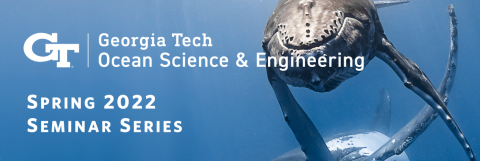event
The Spring 2022 OSE Seminar Series w. Invited Speaker Alexandra Muscalus
Primary tabs
Characteristics and Coastal Impacts of Container Ship Wake
Container ships traveling through coastal shipping channels produce low-frequency wake that behaves like a mini-tsunami at the shoreline, with water levels slowly receding and then quickly surging back with wave heights up to 3 meters. In our research, we collect shallow-water hydrodynamic measurements from the Savannah River to compare the significance of container ship wake, wind waves, and tidal currents to identify the source of rapid erosion along the riverbanks. Using hydrodynamic power as a proxy for erosive capacity along the shipping channel, we identify that container ship wake is by far the most erosive of the three processes. We also find that container ship wake is the most powerful process in a nearby sheltered secondary channel and confirm that the wake readily propagates into neighboring waterways. While most of the power in a wake event is typically in the first wave, there is also significant power in the smaller low-frequency “trailing waves” that can persist for an hour after the ship passage. These waves are commonly assumed to be cross-channel seiching and neglected in coastal impact studies, but our field measurements suggest they could instead be propagating edge waves, which can be far more impactful. This new characterization is confirmed with numerical modeling of vessel passages in a simplified channel, to be followed-up with additional field measurements in the Savannah River next month.
Status
- Workflow status: Published
- Created by: belnaggar3
- Created: 01/20/2022
- Modified By: belnaggar3
- Modified: 01/25/2022
Categories
Keywords
Target Audience

